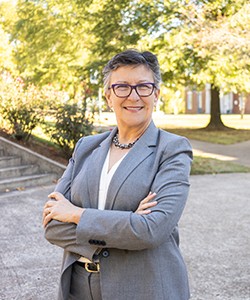![Batesville manufacturer Bad Boy Mowers made its largest donation ever to Lyon College when it secured the naming rights for the school’s football stadium, which will open Sept. 13. [PHOTO provided]](https://www.europesays.com/us/wp-content/uploads/2025/07/Stadium_4_opt-scaled-e1753457228362.jpg)
Batesville manufacturer Bad Boy Mowers made its largest donation ever to Lyon College when it secured the naming rights for the school’s football stadium, which will open Sept. 13. (Provided)
Lyon College’s football team has had just two winning seasons since the college reinstated its long-dormant football program 10 years ago. In that time, the program has joined the NCAA, eliminated football scholarships and played its home games at nearby Batesville High School.
But the return of Lyon football, which was disbanded in 1951, may still be a winning proposition for the small liberal arts college. In September, the school will unveil Bad Boy Mowers Stadium, its first on-campus football stadium and the first phase of a $2.5 million project.
Lyon is part of a nationwide trend in which small colleges use football to boost enrollment, school spirit and maybe even the bottom line.
Enrollment is the primary reason small colleges add athletic teams, particularly football, according to Jeffrey Docking, the longtime president of Adrian College, a small liberal arts school in Michigan.
Football teams are big, they attract students who wouldn’t attend a particular school otherwise, and despite high operating costs they can bring a large return on investment, said Docking, author of “Crisis in Higher Education: A Plan to Save Small Liberal Arts Colleges in America.”
Lyon’s athletic teams, like those at Adrian, compete in NCAA Division III, which does not allow athletic scholarships.
That means the 100 or so players on Lyon’s football roster each season receive the same types of financial packages that other students receive. In other words, the players at Lyon are paying to be there, and that means more dollars are coming into the school.
 Melissa Taverner, president of Lyon College (Lyon College)
Melissa Taverner, president of Lyon College (Lyon College)
Lyon President Melissa Taverner said NCAA Division III also does a good job of emphasizing academics and the balance students must strike between athletics and education.
For students to attend, Lyon has a rough annual cost of $42,040, a sum that includes tuition, housing, dining, fees and more. But, thanks to scholarships and grants, students at Lyon pay an average net cost of around $20,000.
At that average net cost, the 114 students listed on Lyon’s football roster this season will bring in about $2.3 million to the school.
Lyon’s overall enrollment has also increased since it announced the return of football. The school had 592 students in 2013 when Lyon announced it would bring football back to campus, but enrollment spiked to 715 in the Scots’ first season back on the gridiron, the school’s highest enrollment since 1993. Lyon reported an enrollment of 666 students last year.
Last year, Lyon was among 242 football teams competing in Division III. Since 1984, D-III sports teams have increased 85.6%, and the number of athletes has increased 110%. During that time, D-III football teams have increased 23.5%, and, thanks to increasing roster sizes, the number of players has increased 71.8% to 26,429.
Hendrix College, the only other D-III football team in Arkansas, resurrected its squad in 2013 after disbanding the team in 1960. The Warriors will have approximately 160 players on the football roster this season, the school said.
Bad Boy Donation
Football’s benefits extend beyond enrollment, Docking said. It helps the school’s student retention rates, contributes to school spirit and can boost outside donations.
Bad Boy Mowers, a Batesville manufacturer of zero-turn lawnmowers, made the biggest donation it has ever made to the school when it secured the naming rights to the stadium, whose construction is being managed by FARCO of Batesville. Lyon also secured naming rights sponsors for the field, press box, scoreboard, lights and more.
A school spokesperson declined to disclose the amount of the Bad Boy donation.
The school has raised $1.5 million so far for the $2.5 million project. Lyon will unveil the first phase of the project, including bleachers with seating for 600, at the first on-campus game in school history when it plays Arkansas Baptist College on Sept. 13. The second phase of the project will include a visiting team locker room, stadium lighting and a plaza with game-day hospitality areas.
Taverner said the Batesville High School stadium is a good facility but that college students want to play on their own campus rather than at a high school. Taverner sees Bad Boy Mowers Stadium as an investment and wants the football players, whose freshman-to-sophomore retention rate has been lower than the rest of the Lyon student body, to have a facility to be proud of.
“We are very hopeful that having a home stadium on campus will help the students see that we are committed to this program,” Taverner said. “It’s not going anywhere.”